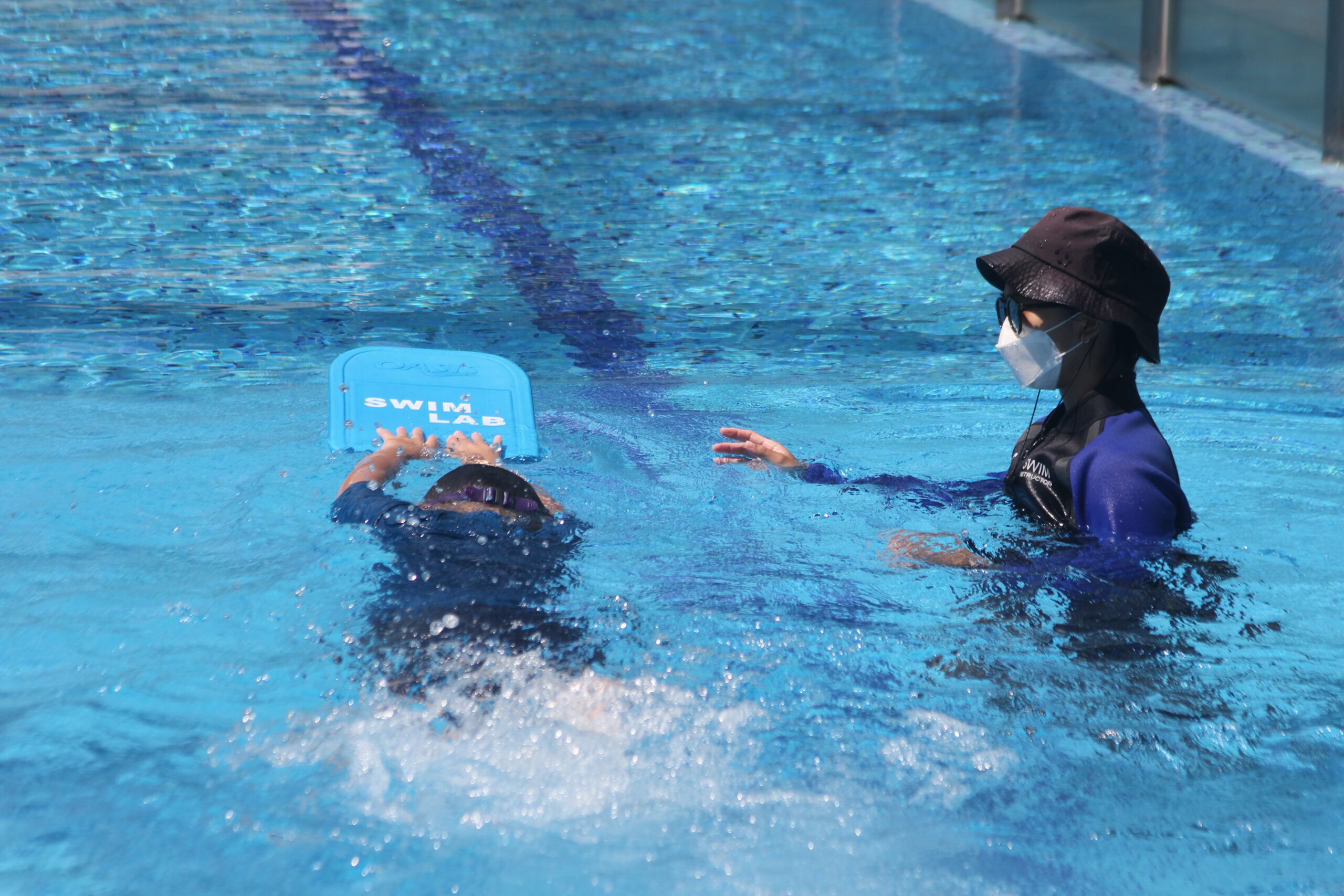As parents, we all want our children to excel in every aspect of life, and swimming is no exception. However, it’s not uncommon for parents to feel a bit lost or even disappointed when their kids don’t get promoted to the next level after an assessment. This article aims to demystify the key milestones in our swimming block plan and provide actionable tips for parents to help their children practice essential skills outside the pool. From breath control to mastering the breaststroke kick, we’ve got you covered with easy-to-follow practices.
Breath Control and Floating Positions
The Importance of Body Position
Learning to swim involves mastering body position in the water. Ideally, the body should be floating and streamlined. A common obstacle to achieving this is improper head position, often stemming from poor breath control.
The Science Behind Floating
Humans are naturally buoyant, especially when younger in age. However, a significant hindrance to floating or swimming well is the head position. When children look upwards for air, their body naturally sinks, disrupting the ideal floating position.
What Your Child Can Do at Home to Learn to Float
1. Practice Breath Holds and Exhaling
- Breath Holding: Practice holding your breath for counts ranging from 3 to 10.
- Inhaling and Exhaling: Inhale from the mouth and exhale from the mouth (for toddlers) or nose (for more advanced swimmers), also in counts ranging from 3 to 10.
- Combining the Two: Hold your breath for 5 counts and then exhale for 5 counts within the same breath.
2. Core Activation Exercises
To prevent the tummy and hips from sinking while floating on the back, try these exercises:
- Glute Bridge: Perform 3 sets of 5 hip raises, holding each for 5 counts.
- Leg Raises: Execute 3 sets of 5 raises with straight legs and pointed toes.
- Crab Walk (Reverse Table Top): Complete 3 sets of 5 raises.
3. Advanced Practices to Aid with Floating in the Pool
For kids looking to take it a step further, try practicing breath control in the shower with water running over your head. They can also practice exhaling into a cup of water with their nose and mouth submerged.
Front/Back Kicks
The Role of Kicks in Swimming
Kicks are essential for both propulsion and balance in swimming. A steady pace of kicks helps maintain forward motion and balance, much like a speedboat or a bicycle.
The Physics of Kicking
Think of your legs as the motor of a speedboat. When the boat slows down, it starts to rock from side to side. The same principle applies to swimming; a steady pace of kicks keeps the body moving forward and balanced on the water.
What Your Child Can Do at Home to Learn to Kick
1. Practice Kicks
- Back Kick: Sit on a chair with legs straight and level, toes pointed, and perform small, fast kicks (3 sets of 10 kicks).
- Front Kick: Lie on your stomach with arms stretched forward and legs in the air, toes pointed, and perform small, fast kicks (3 sets of 10 kicks).
2. Learn the Importance of Coordination
Swimming is a highly coordinated sport that requires the simultaneous movement of different body parts. Cross-lateral movements can strengthen the connection between the left and right hemispheres of the brain, improving overall coordination.
Improve Coordination with Cross-Lateral Movements
Cross-lateral movements like bear crawls, dead bugs, bird dogs, and gorilla walks can improve coordination, which is crucial for swimming. Learn more about cross-lateral exercises here.
Breaststroke Kick
Common Mistakes and How to Correct Them
The breaststroke kick, often called the ‘froggy’ kick, is frequently misunderstood. Common mistakes include opening the knees wider than the ankles and pointing the feet instead of flexing them.
The Mechanics of the Breaststroke Kick
A crucial component of the breaststroke kick is the whip and glide motion on closure. This encourages the swimmer to use the kick to propel in short but fast bursts.
What Your Child Can Do at Home to Learn to Kick
1. Practice Breaststroke Kick
- Survival Back Kick: Follow a sequence of leg movements while sitting on a chair.
- Breaststroke Kick on the Front: Perform a similar sequence while lying flat on your stomach.
2. Improve Ankle and Hip Mobility
- Ankle Exercises: Flex and point your feet while sitting down.
- Hip Exercises: Perform animal movements like duck walks, butterfly stretches, deep squats, and squat jumps.
3. Advanced Leg Exercises
For those struggling with the breaststroke kick, the issue often lies in hip mobility and ankle awareness. Exercises like duck walks and deep squats can significantly improve these areas.

